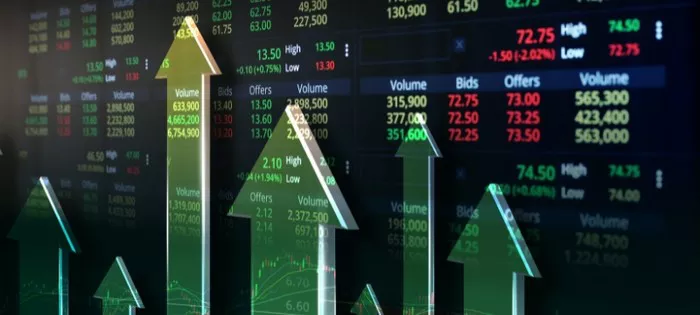In the realm of financial markets, futures trading offers investors the opportunity to speculate on the price movements of various assets, including equities, commodities, and currencies. E-mini futures contracts, in particular, have gained popularity due to their smaller contract sizes and lower margin requirements, making them accessible to a broader range of traders. Understanding the margin requirements of E-mini futures contracts is essential for investors looking to participate in these markets and manage their trading capital effectively.
Introduction to E-mini Futures
E-mini futures contracts are electronically traded futures contracts that represent a fraction of the value of standard futures contracts. They were introduced by the Chicago Mercantile Exchange (CME) to cater to retail traders and smaller investors who may not have the capital to trade full-sized contracts. E-mini futures offer exposure to a wide range of underlying assets, including stock market indices such as the S&P 500, commodities like crude oil and gold, and currencies such as the euro and Japanese yen.
Margin Basics
Margin is a key concept in futures trading, referring to the amount of funds that traders are required to deposit with their brokers to initiate and maintain positions in futures contracts. It serves as a form of collateral to cover potential losses incurred during trading. Margin requirements are set by futures exchanges and brokerage firms and vary depending on factors such as the volatility of the underlying asset, the size of the contract, and regulatory requirements.
Initial Margin
The initial margin is the minimum amount of funds that traders must deposit with their brokers to open a position in a futures contract. It represents a percentage of the total value of the contract and serves as a form of security against potential losses. Initial margin requirements are determined by futures exchanges and are subject to change based on market conditions and risk assessments. Higher volatility assets typically have higher initial margin requirements to account for the increased risk of price fluctuations.
Maintenance Margin
Maintenance margin is the minimum amount of funds that traders must maintain in their trading accounts to keep their positions open. If the value of the position falls below the maintenance margin level, traders may be required to deposit additional funds, known as margin calls, to bring their accounts back to the required level. Maintenance margin requirements are set to ensure that traders have sufficient funds to cover potential losses and protect brokers from default risk.
Day Trading Margins
Some brokers offer reduced margin requirements for day traders who close their positions before the end of the trading day. Day trading margins are typically lower than overnight margins, allowing traders to leverage their capital more efficiently and take advantage of intraday price movements. However, day trading margins may come with certain restrictions, such as minimum account balances or trade frequency requirements, imposed by brokers to manage risk effectively.
E-mini Futures Margin Requirements
Margin requirements for E-mini futures contracts are generally lower than those for full-sized contracts, making them attractive to retail traders and smaller investors. The reduced margin requirements allow traders to control larger positions with less capital, amplifying their potential returns and risk exposure. Margin requirements for E-mini futures contracts are set by futures exchanges such as the CME Group and may vary depending on factors such as contract size, volatility, and market conditions.
Margin Calculation
Margin for E-mini futures contracts is calculated based on the current market value of the contract and the margin rate set by the futures exchange. The margin rate is expressed as a percentage of the total contract value and represents the initial and maintenance margin requirements for the contract. Traders can calculate the required margin for a specific E-mini futures contract by multiplying the contract size by the margin rate determined by the exchange.
Example: S&P 500 E-mini Futures
As an example, let’s consider the margin requirements for E-mini futures contracts on the S&P 500 index. Suppose the current value of the S&P 500 E-mini futures contract is $100,000, and the margin rate set by the exchange is 5%. To calculate the initial margin requirement, traders would multiply the contract value by the margin rate:
Initial Margin = $100,000 * 5% = $5,000
Similarly, the maintenance margin requirement would also be 5% of the contract value:
Maintenance Margin = $100,000 * 5% = $5,000
Traders would need to deposit $5,000 as initial margin to open a position in the S&P 500 E-mini futures contract and maintain at least $5,000 in their trading accounts to keep the position open.
Risk Management and Margin
While reduced margin requirements can provide traders with greater leverage and potential returns, they also entail higher risks. It is essential for traders to implement effective risk management strategies to protect their capital and minimize losses. This includes setting stop-loss orders, diversifying portfolios, and avoiding over-leveraging positions. By maintaining sufficient margin levels and managing risk prudently, traders can navigate the volatility of futures markets with confidence and discipline.
Conclusion
In conclusion, understanding the margin requirements of E-mini futures contracts is crucial for traders looking to participate in these markets effectively. Margin serves as a form of collateral to cover potential losses and allows traders to control larger positions with less capital. By adhering to margin requirements, implementing sound risk management practices, and staying informed about market conditions, traders can leverage the opportunities offered by E-mini futures contracts while managing their risk exposure responsibly.


